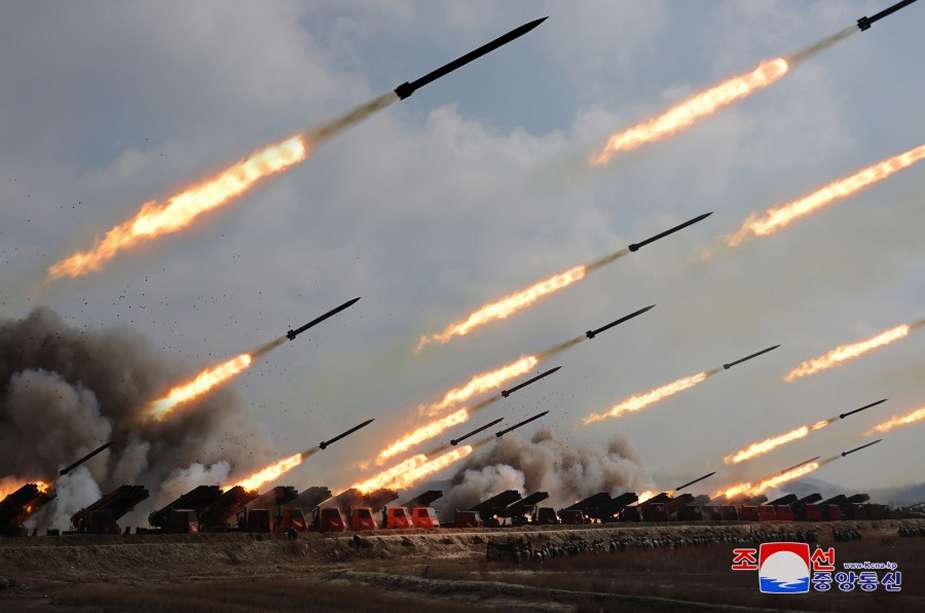Breaking news
North Korea conducts massive artillery drills near South Korean border.
On March 8, 2024, the Korea Central News Agency (KCNA) reported artillery fire training exercises conducted by the North Korean People's Army (KPA), aimed at evaluating the combat readiness and capabilities of their artillery units. Conducted near the border with South Korea, the exercises focused on assessing the firepower of various units, including long-range artillery, which are considered crucial for strategic deterrence.
Follow Army Recognition on Google News at this link

The firepower of various units, including long-range artillery, is considered crucial by North Korea in case of a potential conflict on the Korean Peninsula. (Picture source: KCNA)
The exercises were attended by key North Korean leadership figures, including the country's leader, Kim Jong-un, alongside Kang Sun-nam, the DPRK's Minister of National Defense, Ri Yong-gil, Chief of the General Staff of the KPA, and the Commander of the KPA's Joint Forces. The focus of the training was on the preparedness and skills of the artillerymen, with Kim Jong-un observing the exercises from an observation post and interacting directly with participants, indicating the importance of artillery within North Korea's military strategy. Following the exercises, Kim Jong-un expressed satisfaction with the performance and preparedness of the artillery divisions.
Simultaneously, South Korea and the United States have been conducting several joint live-fire exercises near the border with North Korea since the start of 2024. In January, these exercises involved South Korean units, including the Capital Mechanized Infantry Division and the 2nd Quick Response Division, and utilized a range of military hardware such as K9 and K9A1 self-propelled howitzers, K1A2 and K2 Black Panther Main Battle Tanks, K600 Rhino mine-clearing tanks, and K21 Infantry Fighting Vehicles.
More recently, on March 4, 2024, South Korea and the United States started their annual joint military exercises, known as Freedom Shield 2024. This exercise, scheduled to last for 11 days, is designed to improve defensive readiness against potential threats from North Korea, integrating live exercises to incorporate insights from current global conflicts into training to enhance combat readiness.
North Korea's state media criticized these maneuvers by South Korea and the United States as provocative and warned of an increased risk of clashes. In response to the heightened tensions, the South Korean military has ramped up its monitoring of North Korea's military activities, which included conducting more than 90 artillery firings on January 7, 2024.
To enhance its surveillance capabilities, the South Korean Defense Acquisition Program Administration (DAPA) announced on January 8, 2024, the planned deployment of two additional military spy satellites equipped with synthetic aperture radar (SAR) technology, scheduled for launches in April and November 2024.
The situation has been further exacerbated by a series of recent statements and actions from North Korea, including a speech made by Kim Jong-un on December 31, 2023, threatening a nuclear attack on Seoul and ordering an expansion of the country's military capabilities in anticipation of potential conflict on the Korean Peninsula. North Korea's strategy, as interpreted from these actions, seems to involve escalating tensions to possibly extract concessions, particularly considering potential political changes in the United States.
This strategy is supported by North Korea's actions on the international stage, including arms deliveries to Russia and Hamas, as well as advancements in its military capabilities demonstrated by the successful test of the Hwasal-2 strategic cruise missile, launches of the new Pulhwasal-3-31 submarine-launched strategic cruise missile, and tests of a newly developed 240mm multiple rocket launcher system.


























